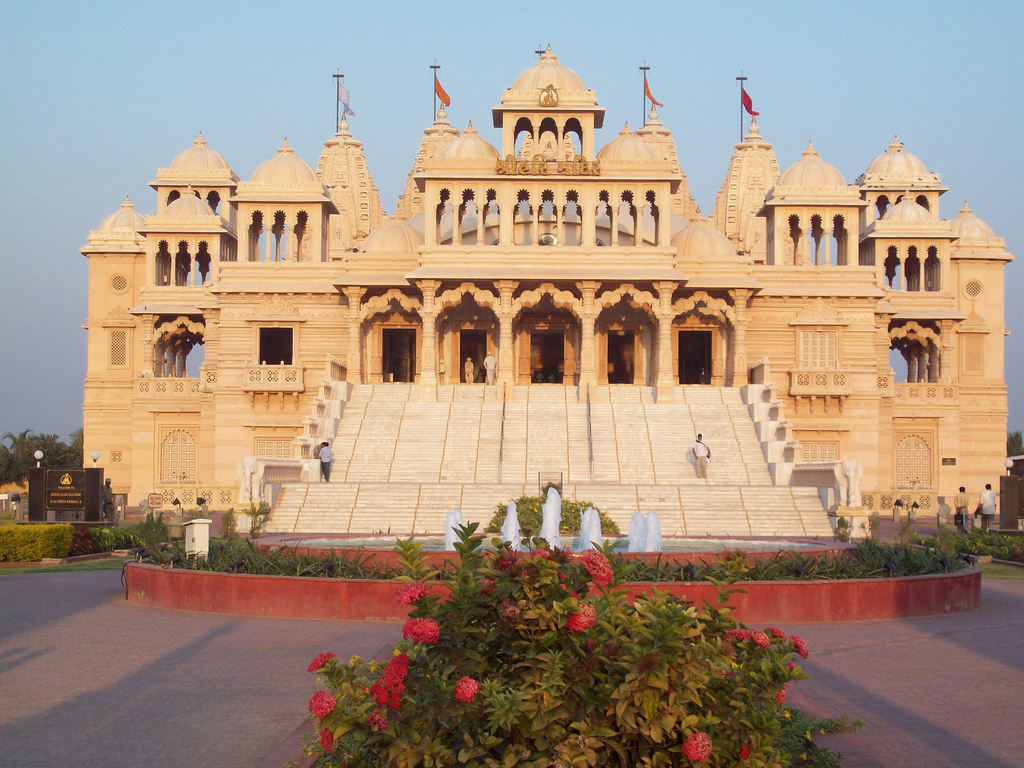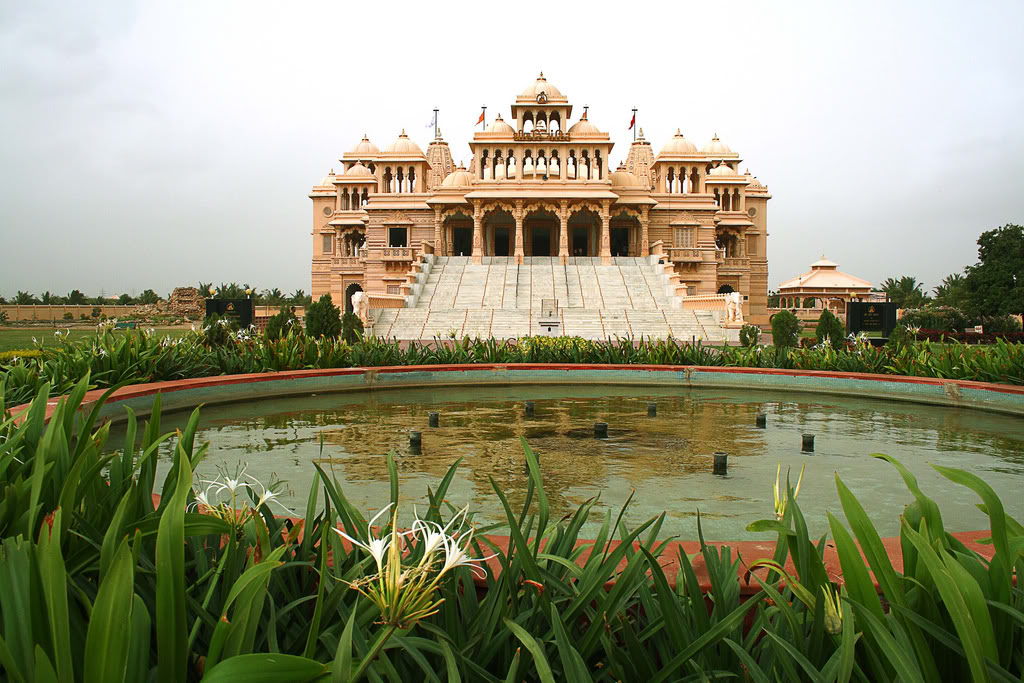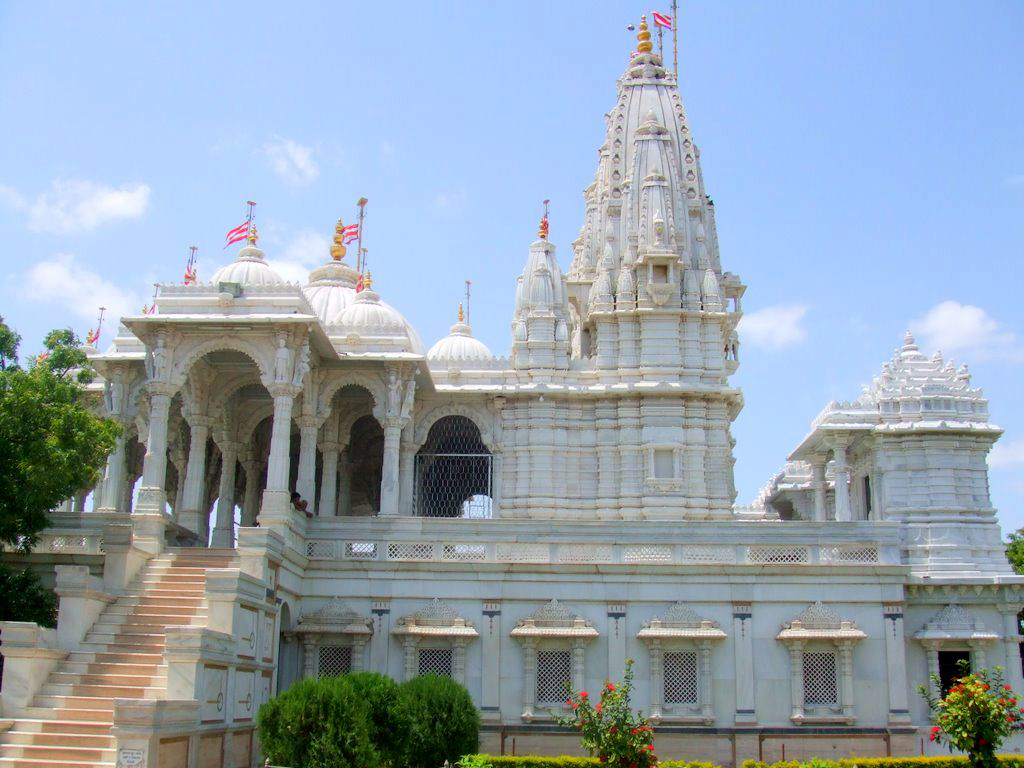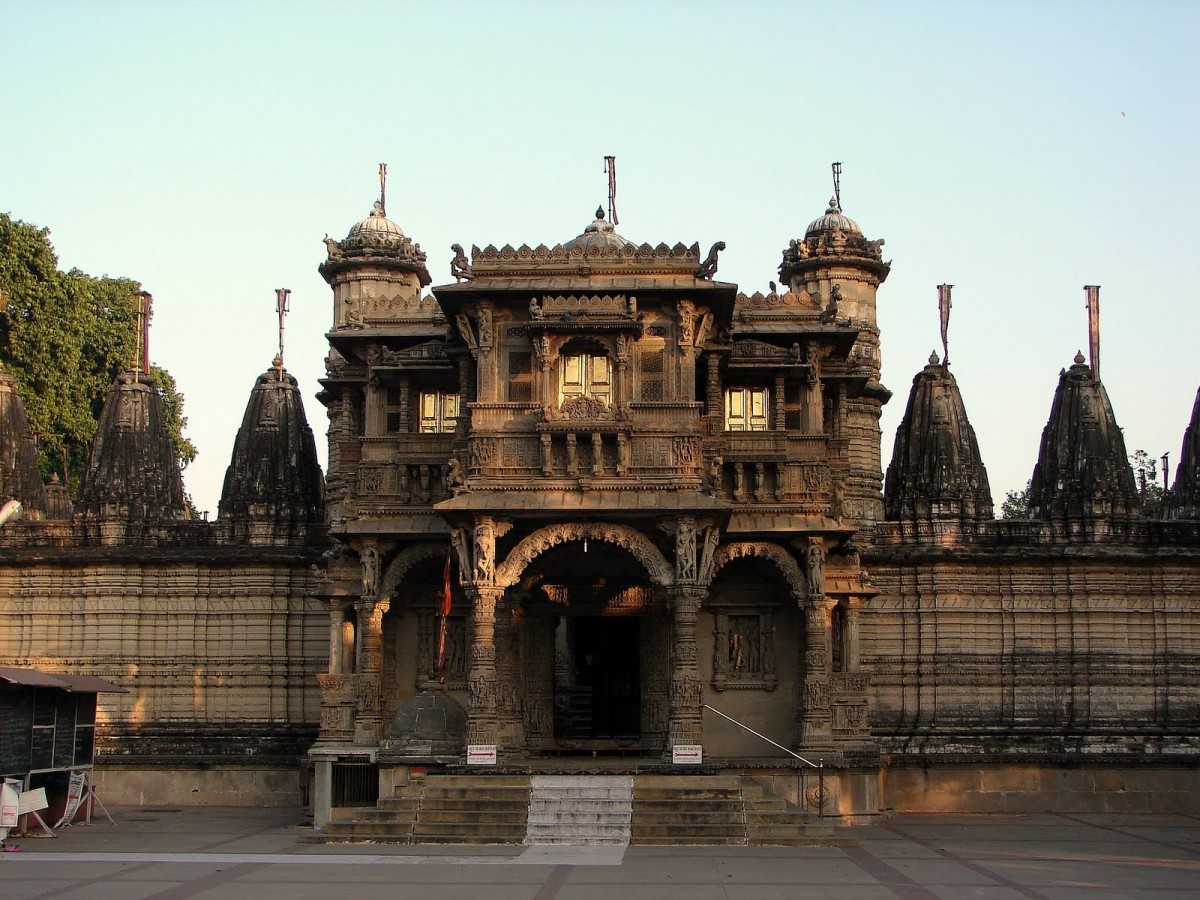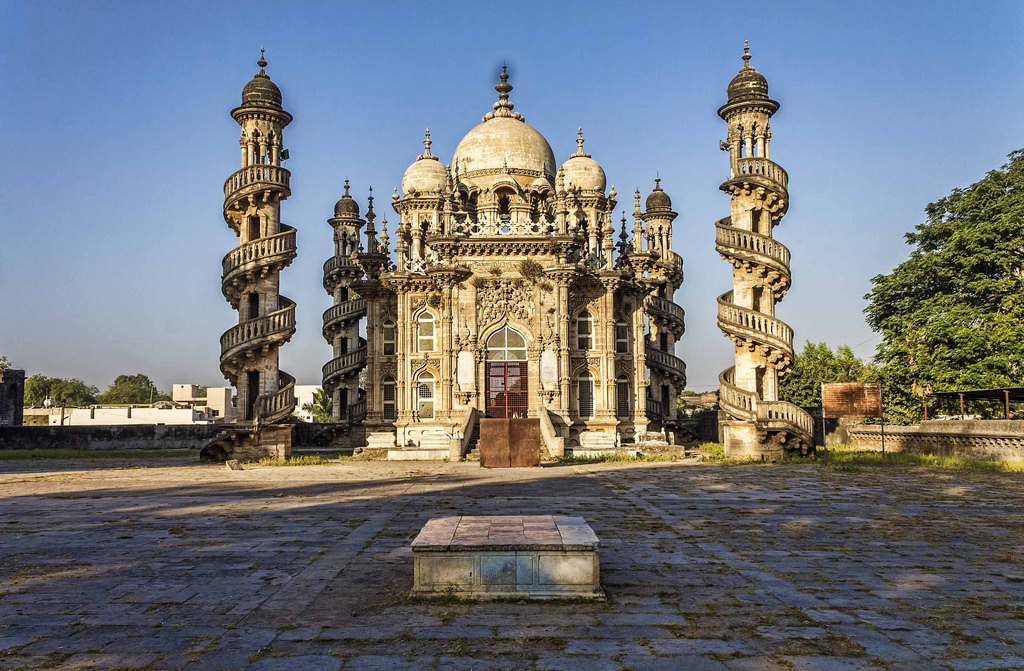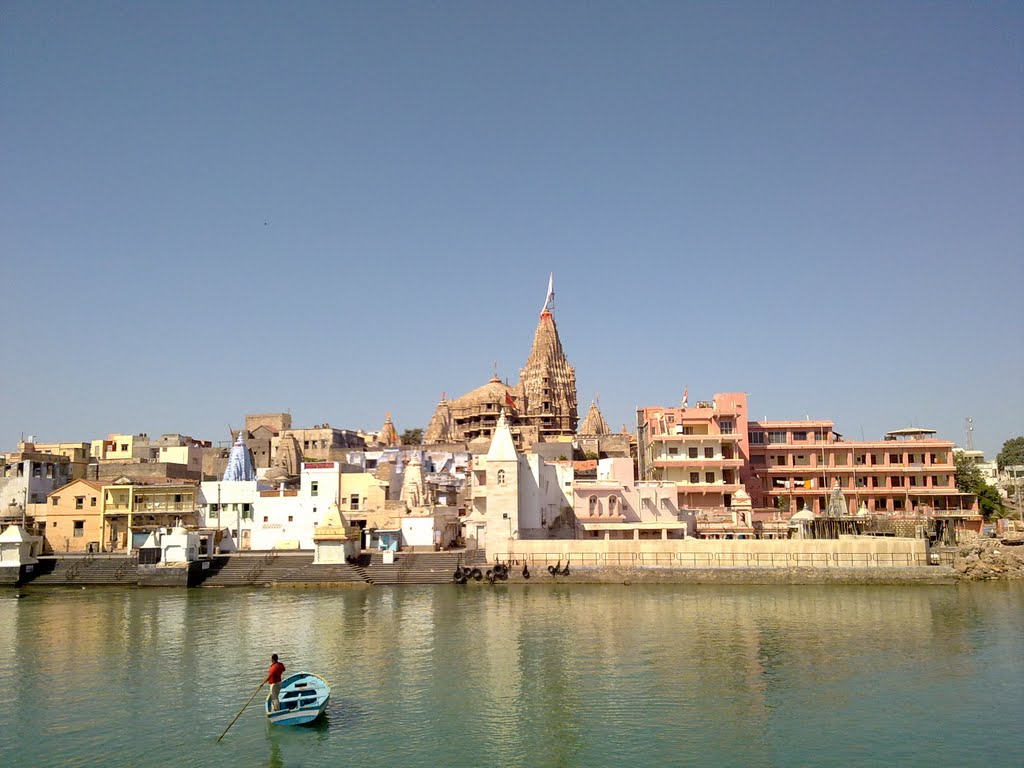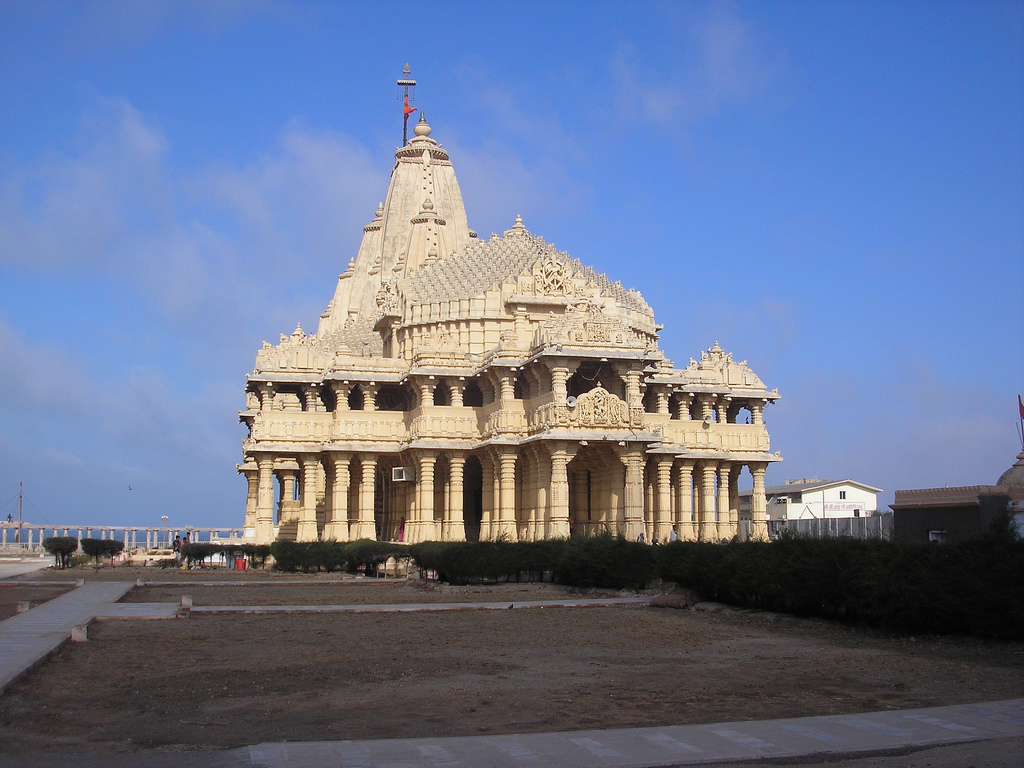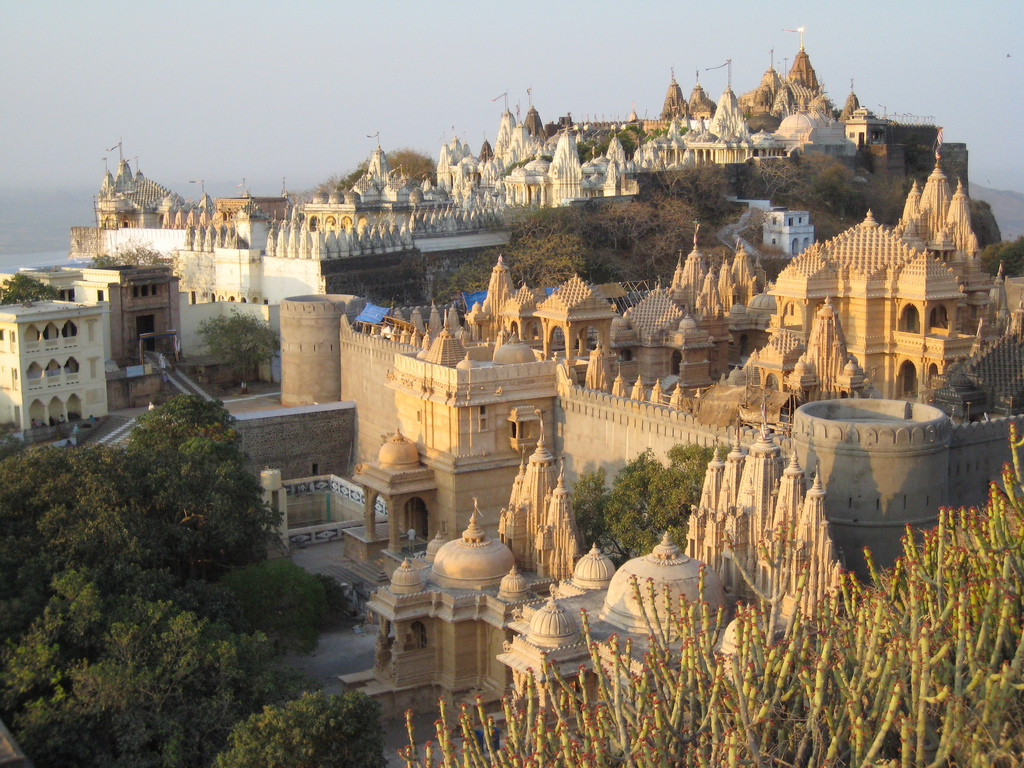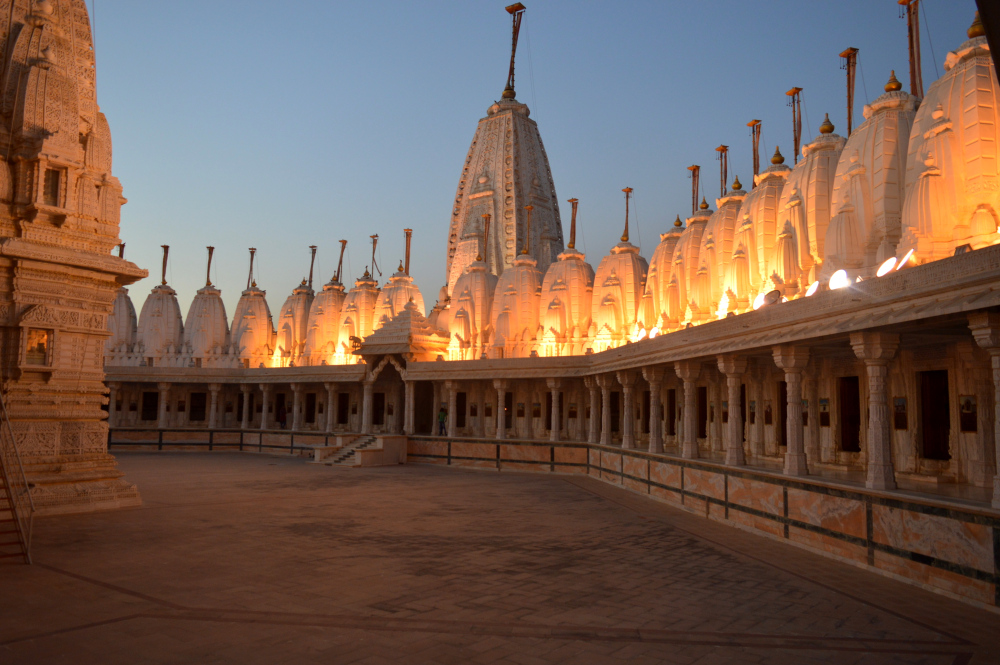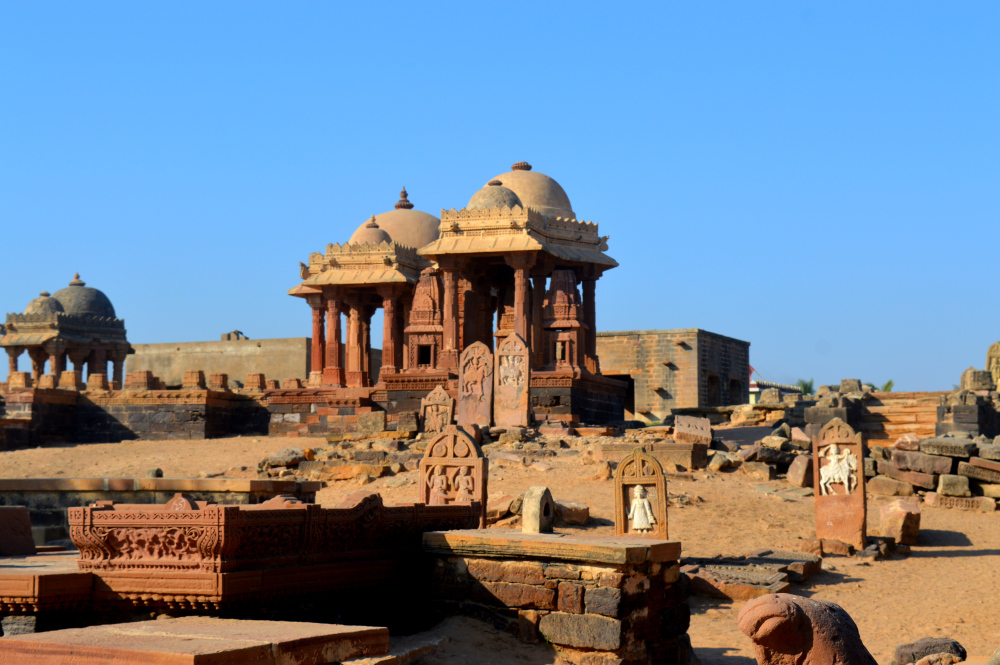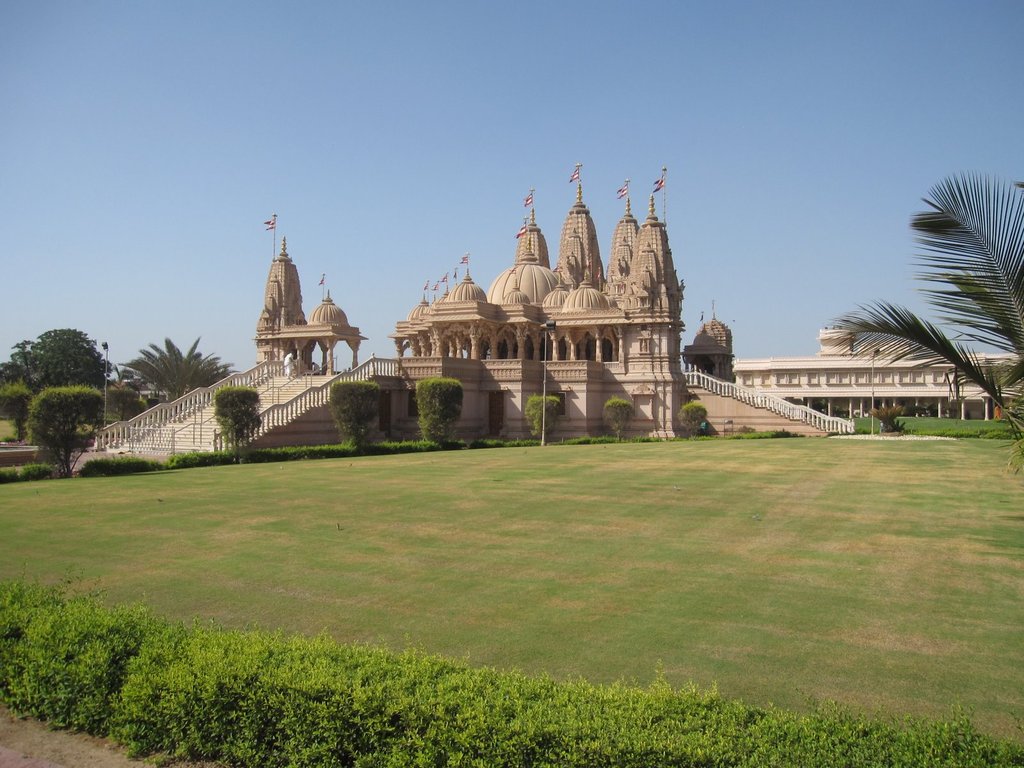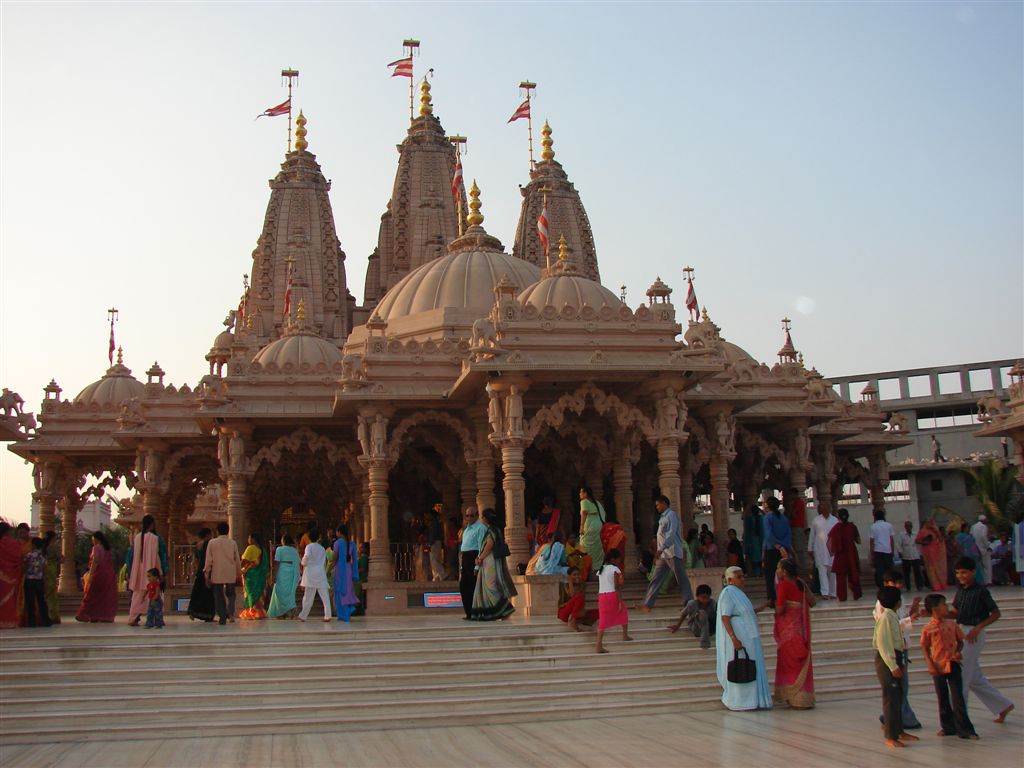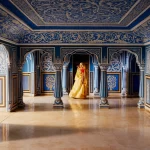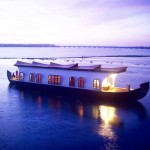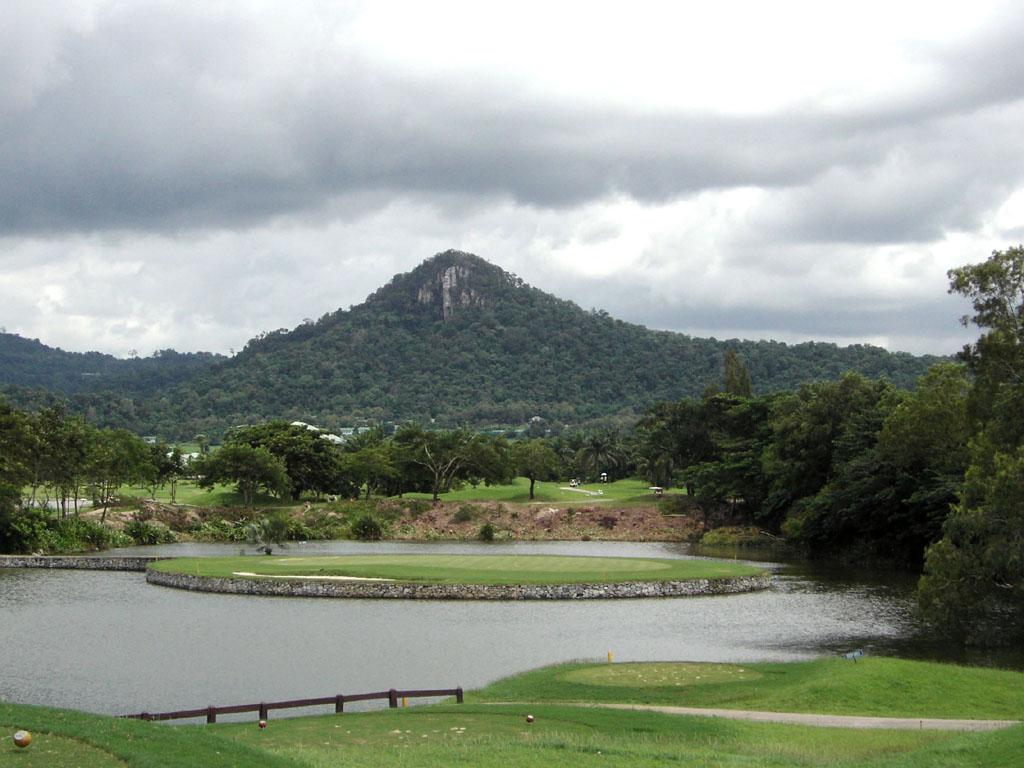
Surat Tourism and Travel Guide:
History of Surat: The first sign of opposition to Portuguese influence on Surat waters was in August, 1608 when an English ship arrived at river Tapi and commander Captain Hawkins brought message of His Majesty for emperor Jehangir, who later allowedSurat English people to trade through this port.
Years 1608 to 1615 witnessed many battles between English and Portuguese sailors for control over Surat waters. In 1624, first trade with Holland was negotiated through Surat with export cargo of Indigo Export from Surat During first half of 17th century (1608 to 1658), principal cargo of export from Surat was cloth, both silk and cotton. The cloth was used by all people from Cape of Good Hope to China.
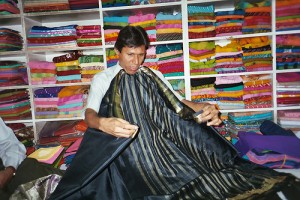
French arrived in Surat for the first time in 1620 A.D. and started international trade with a modest beginning. After Portuguese, English and Dutch, they became the fourth European community to settle and commence trading relations with this historically prosperous city.
Plague Outbreak of great plague affected social life of the city very badly from A.D.1684 to 1690.
Since centuries, Surat has been popular for gold based “Jari” (Yarn) business and weaving activities, in addition to providing an export outlet for agro based products from Magdalla port. It is known that Maharaja Shivaji who ruled western India in 17th century, attacked Surat about seven times for valuable booty. Shivaji attacked Surat seven times
Surat witnessed major fire out breaks in 1822,1837,1842 and 1848. The fire of 1837 (20th April) was visible upto 30 miles and it destroyed about 9,373 houses with value approximating to Rs.4.6 million at that time. Surat witnessed major fire
30,000 people participated in anti government agitation In 1844, about 30,000 people participated in anti government agitation protesting against increase in salt levy by the Britishers.
Surat also participated in anti government agitations in 1860 and 1878 for protesting
Weekly publication of ‘Gyan Sagar’ Poet Narmadashanker established association of democracy loving citizens in Surat1851/52 and started weekly publication of “Gyan Sagar”.In 1851, missionaries started publication called “Peherejgir”under guidance of famous Shee Mahipatram.
The municipality of Surat was established as long ago as
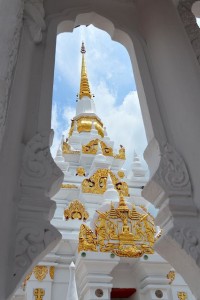
1852 and since then civic amenities like hospitals, public gardens,etc. have gradually been growing.
Climate of Surat: Surat is situated in the western parts of India in the state of Gujarat. The summer in these parts are quiet warm with average temperature being around 43 ‘C to avoid any kind of sickness proper care of health should be taken during the summer months in Surat. Winter is quiet pleasant with temperature dipping to around 9 ‘C. The best time to visit the city is during the months of October to April
How to Reach Surat?
By Air: The nearest airport from Surat is Vadodara. Several airlines operate flights to and from Vadodara connecting it to cities like: Mumbai, Bhavnagar.
By Road: An extensive network of roads connects Surat to the important cities in Gujarat, Maharashtra, Madhya Pradesh, Rajasthan and Delhi. Ahmedabad and Mumbai are linked by road to Surat.
By Rail: Surat has a railway station of its own. It is one of the main junctions on the Mumbai – Delhi – Ahmedabad broad gauge line. Many important trains service the railway station regularly connecting it to several major cities in Gujarat and the sates of western India.
Shopping in Surat:
Since long past Surat, in Gujarat, has the reputation of a key trading center in Western India. During the reign of the Mughals, Surat was an important port on the western coast. Mercantile and commercial traditions still continue in the land.
The land also has a rich tradition of handlooms and handicrafts, which make for fantastic shopping in Surat. It is of course one of the most important zari-manufacturing centre in India. Fine gold and silver threads used in zari work are made in hundreds of big and small workshops in Surat. Do pick up a few lustrous Indian garments embellished with the exquisite works of Zari, kinari, salma, while shopping in Surat.
Woodworks are also popular items for shopping in Surat. The skilled artisans of Surat carve out table lamps, side tables, boxes and various other utilities and objets d’art, which serve as fantastic souvenirs. Sadeli or marquetry work is yet another specialty at Surat. Long, thin strips of wood, tin or ivory are cut and pasted in patterns on boxes and caskets to create appliquéd goods. Surat also has a rich tradition of silver work. A few items easily found in the local bazaars should feature in our shopping cart in Surat.
Numerous private-run shopping outlets and government owned emporia dot over the cityscape. Explore the stall erected by the local vendors if you are comfortable with a little bit of bargaining.
Monuments of Surat:
Old Fort Surat:The city of Surat is located on the bank of river Tapi in the West Indian state of Gujarat. Surat was a grand port city during the Mughal period. Since the ancient times, the early port of Surat has been well-known for its elite quality fine silks and beautiful brocades and its trade in various spices. Surat has been one of the most progressive of India’s cities in the 17th and 18th centuries. Presently, Surat is
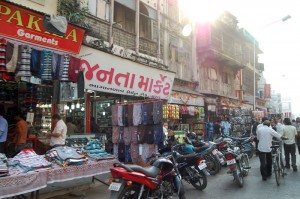
a chief industrial city with many textile mills. Besides, Surat is also an imperative diamond-cutting centre in India. Surat features many attractive tourist destinations. Monuments in Surat are a popular destination with tourists visiting the famous Old Fort which stands tall in the city.
Surat Old Fort was built by Muhammad Tughlak in the 14th century to serve as the defense fortification against the Bhils. Ghiyas-ud-din Tughlaq was the original of the Tughlaqs to rule Delhi. Subsequent to Muhammad Sahab-ud-din Ghori, the next mention of Surat is in 1347 A.D., in connection with the rebellion of Gujarat during the time Surat was under Muhammad Tughlak (1325 to 1351). In 1373 A.D., the emperor Firoz Tughlak(1351 to 1388) is said to have built a fort at Surat to guard the town against Bhils attack who wanted to conquer the land.
Muhammad bin Tughlaq was the most divisive of all the sultans ever to rule India. Muhammad Kunhi by birth, he was known as ‘Muhammad the Bloody’. He was the most cruel, cold-blooded and unpredictable Sultan yet. At the same time, he was also brilliant, benevolent and an endearing person. He built this massive Old fort in Surat to protect his men from the brutal attack of the Bhils. The old fort is an impressive architecture with strong walls and iron bars. Tourists while tour to Surat visits this opulent masterpiece. Among all monuments in Surat, Old fort in Surat demands a special mention and is worth a visit.
Sardar Patel Museum:Apart from its silks, textiles, spices and exquisite diamond cutting, the city of Surat is also famous for the various Tourist attractions in Surat. Though there are many gardens and monuments, the Museums in Surat are a big draw for many travelers. One such museum is the Sardar Patel museum in Surat.
It was in the year 1890 that this particular museum was established. It houses the various artifacts that stood testimony to the Mughal and the British period.
The Sardar Patel Museum in Surat is a multipurpose museum which is located in Sonifalia. It plays host to several pieces of antiques such as that made of wood, metal, ivory, stone, sandalwood, porcelain and terracotta. Several old oil paintings, miniatures, textiles, manuscripts and many such other items are also displayed in the exhibition organized by this museum. This is the only museum in Surat that has gained a lot importance owing to its rich collection of ancient historical items that are important part of the national heritage too. One will come across 10, 000 specimen of the various arts and crafts at this place. There is also an open air theater which can accommodate about 4000 people at a time.
A visit to this museum will bring forth the dormant history of Surat. A mere glimpse of the specimens displayed here would cast an amazing spell, not only on the archaeologists who come to pay a visit, but also on the common tourists.

